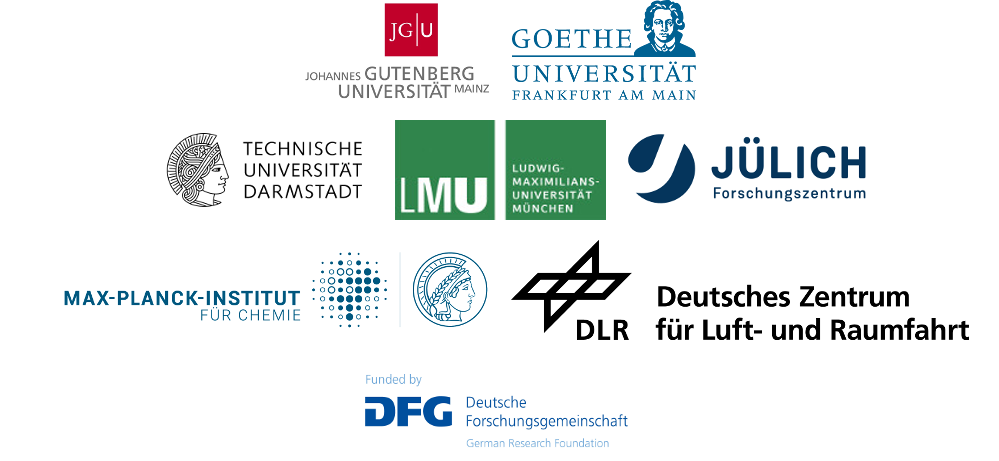The tropopause Region in an Changing Atmosphere (TPChange)
The Collabroative Reserach Centre TPChange (speaker: Univ. Prof. Peter Hoor) adresses the adequate representation of UTLS processes and the feedbacks in climate models which are essential to understand for projections of climate change. Therefore field measurements, laboratory studies, theoretical approaches, and multiscale numerical modelling are combined. Based on an improved understanding of relevant processes at different scales, the Collaborative Research Center will develop parameterisations to improve state-of-the-art climate models. The main goal of TPChange is to specify the impact of UTLS processes on composition, dynamics and ultimately on future climate and climate variability.
The consortium of the DFG funded TRR 301

Research of the UTLS group in a nutshell

*UTLS = Upper Troposphere/Lower Stratosphere
The central research topics of the group of Peter Hoor are related to transport and mixing processes affecting the tropopause region or the extratropical upper troposphere / lower stratosphere (ExUTLS, see e.g. Gettelman et al., 2011).
Changes of the distributions of trace gases, like water vapor, ozone and ozone depleting substances, and thin cirrus clouds in the upper troposphere and lower stratosphere (UTLS) strongly impact radiative forcing of the Earth's climate and surface temperatures (Solomon et al., 2010), and are of key importance for understanding climate change (Hegglin and Shepherd, 2009; Riese et al., 2012). Transport and mixing in the extratropical upper troposphere / lower stratosphere (ExUTLS) play a key role for the quantitative understanding of the distribution of these radiatively active species (Riese et al., 2010). The formation of the extratropical transition layer (ExTL) around the tropopause, which exhibits chemical characteristics of both the stratosphere and the troposphere (Hoor et. al, 2002, 2004; Pan et al., 2004), is a direct consequence of the underlying frequent small scale mixing processes.
The AG Hoor combines airborne measurements of trace gases with Lagrangian analysis tools and meteorological analysis and reanalysis data as well as Earth system models to
1) investigate processes at the tropopause leading to cross tropopause exchange
2) to identify transport regimes and quantify time scales of transport in the UTLS region
3) identify transport pathways in the troposphere
